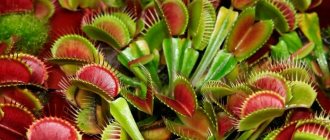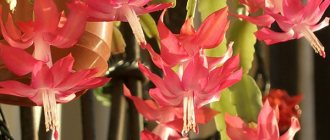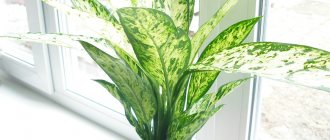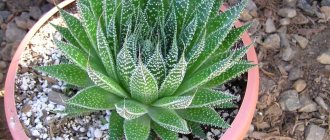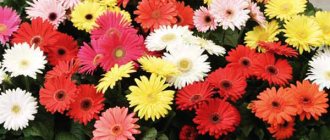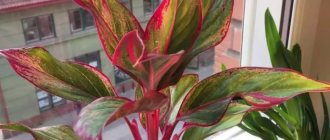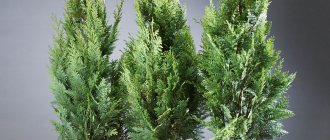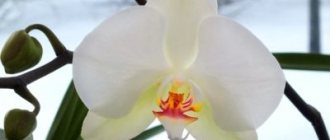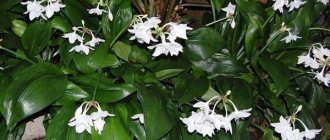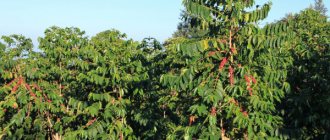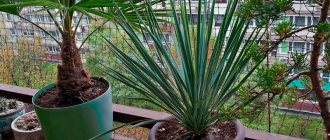Dieffenbachia is a plant native to the tropical zone of America. Belongs to the Aroid family (Araceae). Many species are characterized by large and variegated, elongated oval in shape, highly decorative leaves.
Dieffenbachia is a plant native to tropical America.
- Temperature, humidity, lighting
Signs and superstitions associated with Dieffenbachia
The decorative perennial is incredibly popular among amateur gardeners, but not everyone knows where the negative signs associated with such a plant come from, and why many people still associate such a flower with troubles and misfortunes. In ancient times, such a flower was widely used as a torture device for slaves . It's all about the presence of plant juice with toxic components.
The offender was forced to slowly chew the leaves of such a plant. Of course, a small amount of toxins did not cause the death of a slave, but caused severe swelling that did not allow the person to speak. Thus, the risk of causing death or serious physical injury was minimal, but the offenders were very afraid of such punishment.
Description of species and varieties of Dieffenbachia
Absolutely all varieties of this genus are characterized by thick and succulent stems, on which green leaves with white spots are located. The growth point of a perennial is most often located in the apical part of the shoot, but bushy forms sometimes have dormant buds at the base of the stems. The maximum height, as a rule, does not exceed a couple of meters, but during the growth process, the trunk part gradually becomes exposed, which causes a decrease in decorativeness. Flowering is rare in indoor floriculture. Flowers are collected in inflorescences or cobs.
Dieffenbachia spotted Camilla, Tropic snow, Tropic san
D. maculata - has very wide leaf blades, on which white spots are concentrated along the lateral veins. This species was used in the breeding of the cultivars “Camilla”, “Tropic Snow” and “Tropic Sun”. For example, the popular Tropic Snow variety is characterized by a predominance of white foliage.
Dieffenbachia Tropic snow
Dieffenbachia compacta
D. Compasta is a variety characterized by very small, compact sizes, with a height of the above-ground part of no more than 35-40 cm. The foliage is spotted, medium in size, located on dense shoots.
Dieffenbachia lovely (pleasant)
D.amoena is an unpretentious variety that is quite easy to care for. The above-ground part is no more than one and a half meters high with half-meter dark green leaves and white stripes along the veins.
Dieffenbachia macrophylla
D.macrophylla is a variety with a strong stem no more than a meter high and dark green, oblong-ovate or broadly ovate leathery leaves with a fairly thick central vein.
Also read: Strelitzia: secrets of growing the African bird of paradise
Dieffenbachia macrophylla
Dieffenbachia baraguina
D.baraquiniana is a variety characterized by the presence of snow-white petioles and dark green foliage, with rare white spots of irregular shape and a white mid-vein.
Dieffenbachia Leopolda
D. leoroldii - the species is characterized by a short stem, no more than 50-60 mm in height and up to 20 mm in diameter, with green petioles with purple spots. The leaf blades are wide elliptical in shape, dark green, with a white central vein.
Dieffenbachia Leopolda
Dieffenbachia seguina
D.seguine is a variety characterized by the formation of fairly wide and large leaf blades, on the surface of which there is a small number of white spots. The number of lateral veins does not exceed twelve.
Dieffenbachia Oersted
D.oerstedii - this species has oval-pointed or elongated heart-shaped leaves no more than 35-37 cm long. The foliage is green in color, with a pronounced central vein of light green color.
Dieffenbachia Oersted
Dieffenbachia baumann
D.bowmannii is a very popular variety with the largest leaves, the length of which, as a rule, exceeds half a meter. The leaf blade has a pronounced green color and is covered with very characteristic, small and light dots.
Dieffenbachia bush Green Magic
D.Green Magic is one of the most popular and well-known hybrid forms, forming a dense and low bush with dark bluish-green leaves and a white central vein.
Mold Removal
The fight against mold consists of removing the affected parts of indoor flowers and preventive antifungal treatments. It is also important to restore the microclimate and create suitable conditions for plants.
When treating white plaque, you need to carry out comprehensive measures and regularly inspect healthy flowers so as not to miss the moment and start treatment in a timely manner. But treating diseases is much more difficult than preventing their development. Therefore, systemic preventive measures should be carried out.
This is interesting: How to properly prune Geranium at home so that it is fluffy
Aktara
Strong insecticide with mixed effects. Used for surface application and watering. Price from 12 rub. for 1 g of dry powder. It is considered one of the most effective, since it has an intestinal contact effect on adult insects, their larvae and clutches.
Apply externally to flowers from a spray bottle. Dissolves at the rate of 1 g per 1.2 liters of water. Then the pot should be covered with a bag and left for about an hour.
The product is not washed off. Its effect begins within 24 hours when applied externally and after 2-4 days when watered. To apply to the soil, 1 g of the product is dissolved in 10 liters of water.
The mixed procedure is performed repeatedly (from 2 to 5 times with a difference of 10-14 days), focusing on the air temperature.
Green soap
Brown or greenish liquid with a soapy odor. The main component is potassium salts, which have a detrimental effect on pests, destroying the habitat and blocking the access of oxygen to scale insects, their eggs and larvae, without which the parasites die.
Dilute 250 ml in 10 liters of water, mix thoroughly, and evenly spray the green part of the plant. Treatment should be performed 3-4 times with an interval of 3 weeks. Price from 29 rub. for 250 ml. According to reviews on the forums, it is a very effective tool and receives positive ratings.
Fitoverm
Fitoverm is a biological preparation that is safe for people and animals. Many experienced gardeners advise starting to process plants with it. Price from 9 rub. for 2 ml.
A safe solution is made from 2 ml of product and 200 ml of water. Treat by spraying or wiping. Designed for contact action. In recent years, scale insects have become accustomed to the drug.
When the plant is seriously affected, more toxic substances are chosen (Vermitek, Karbofos, Actellik), spraying them on the street.
Important: chemical treatment must be carried out wearing personal protective equipment, avoiding contact of the solution on the skin and mucous membranes (eyes, mouth, respiratory organs) as much as possible. After contact with the drugs, wash exposed areas of the body with running water and soap.
Caring for Dieffenbachia at home
Almost all varieties of such decorative tropical perennials are completely unpretentious and fast-growing plants that absolutely do not require complex special care.
However, in order to maintain its decorative appeal for many years, it is very important to strictly follow the regime of irrigation and fertilization. Among other things, it is imperative to provide the plant with the most comfortable microclimatic conditions for full growth and development.
Temperature, humidity, lighting
Dieffenbachia of any variety is light-loving, and also prefers the presence of fairly intense lighting in the room, but without direct rays of the sun hitting the above-ground part. That is why, on especially hot summer days, it is advisable to place a flower pot with a crop in the partial shade of an eastern or western window.
If an ornamental plant is supposed to be grown on a south-facing window, then it is best to install the flower pot at a distance of a meter from the window. In winter, on the contrary, the crop should be placed in the brightest place. Strong shading causes problems : the leaves turn yellow, and the plant itself often withers, and excessive lighting causes discoloration of the foliage.
It is imperative to provide Diffembachia with the most comfortable microclimatic conditions for full growth and development.
In winter and late autumn, the temperature in the room should be approximately 16-18°C. It’s not scary if the temperature drops briefly to 13-14°C. also very important to remember that drafts are strictly contraindicated for culture. The perennial is very responsive to high levels of indoor air humidity. Starting from spring and until the first ten days of autumn, it is imperative to provide all varieties with regular daily spraying of foliage.
Also read: Kalanchoe calandiva: botanical description and home care rules
Starting from mid-autumn and throughout the winter period, spraying can be done only a couple of times a week. A completely worthy replacement for spraying would be to place the flower pot on a tray with wet expanded clay. It is equally important to remove dust from the above-ground part with well-settled tap water at room temperature or using special cosmetics that allow you to remove whitish spots from leaf plates.
Dieffenbachia of any variety is light-loving
Soil and flower pot
The tropical perennial grows very well in soil mixtures with an acidity of 5.6-5.8 pH. The soil must be breathable and breathable . This type of soil allows oxygen to freely penetrate to the root system, and water does not stagnate at the roots.
Perfect for growing any universal substrate suitable for cultivating decorative foliage plants with the addition of a small amount of peat chips and charcoal. To independently make the correct nutrient substrate, you need to mix four parts of leaf soil, two parts of peat chips, a couple of parts of sphagnum moss, one part of medium-fraction sifted sand and half of a part of charcoal.
To ensure a comfortable position for the root system, you need to choose a medium-sized flower pot, slightly larger than the volume of the roots. A prerequisite when choosing a high-quality planting container is the presence of a sufficient number of drainage holes in the bottom. Among other things, the flowerpot must be made of heavy materials, which will ensure its stability.
Dieffenbachia grows very well in soil mixtures with an acidity of 5.6-5.8 pH
How to water a flower correctly
Irrigation activities should be moderately abundant from the beginning of spring until the onset of autumn, which is due to the large leaf mass and increased water evaporation. During the process of evaporation, the foliage may sometimes appear to be crying. However, an excess amount of water can cause root rot, so watering is done with well-settled water at room temperature only after the soil substrate in the flower pot has dried out by about a third. In autumn and winter, you must also follow the watering regime, and do it only when the soil has dried sufficiently.
How often and under what conditions does Dieffenbachia bloom?
The inflorescences are ears that vaguely resemble corn. Flowering usually occurs in spring and begins in April or May . The inflorescence appears from the leaf axil and has a cream or greenish cover.
In indoor floriculture, flowering is rare and does not last long, after which the inflorescence fades and needs to be cut off. If this is not done, red or reddish-orange poisonous berries will form. The formation of seed material greatly depletes the plant.
In indoor floriculture, Dieffenbachia flowering is rare and does not last long.
Repotting a houseplant
After the root system has completely filled the entire volume of the flower pot, the plant needs to be replanted. Experienced amateur flower growers recommend replanting the crop in early spring, after breaking dormancy. During the transplantation process, the woven roots are carefully untwisted, after which they are carefully examined. All identified areas of damage and lesions are cut off and sprinkled with powdered charcoal.
Also read: Tropical guest: growing croton at home
How and when to fertilize Dieffenbachia
It is especially important to properly feed the crop at the stage of active growth, which occurs in the spring-summer period. Varieties with green leaves are fed with fertilizers that do not contain lime. It is recommended to feed variegated varieties with standard mineral fertilizers approximately once every three weeks.
It is especially important to properly feed Dieffenbachia at the stage of active growth, which occurs in the spring-summer period.
Treatment of different types of plaque
Features of the treatment of white plaque directly depend on the source of the lesion.
Mold
If mold appears only in the top layer of soil, you simply need to remove it with a spoon and replace it with a new, disinfected one.
If the scale of the damage is larger, the plant will need replanting. To do this, it is removed, the roots are washed, treated with a weak solution of potassium permanganate, dried and moved to a new pot with a new substrate. After these operations, the ground can be sprinkled with cinnamon or soda.
If mold spots appear on the leaves, they must be wiped with a soft sponge. After treatment, the plant is sprayed with any fungicidal solution - it is advisable to carry out these operations outdoors.
Please note that any mold can be inactive or active. If stains remain after wiping the surface, then most likely you have an active fungus. In this case, all diseased fragments of the flower must be cut off and destroyed. It is almost impossible to remove mold that has penetrated deep into green tissue.
How to treat sticky?
The leaf can become sticky after being attacked by mealybugs, whiteflies and some types of aphids. A frequent culprit of this phenomenon is the spider mite, but with it no white coating is detected; at the last stage, a characteristic white web is formed.
But it is still necessary to combat such pests, since the stickiness of the leaf is a very alarming signal. Here's what we recommend:
- using a cotton swab dipped in alcohol, collect visible insects (this applies to mealybugs);
- treat the plant with an insecticide. In the fight against stickiness and plaque, Aktara and Actellik are best suited;
- Wipe the window sill and window frame with an insecticide solution next to the place where the sick pet’s flower pot stood - the mealybug can live there too.
One-time treatment is a bad help. You will have to repeat it several times.
IMPORTANT! To treat the plant, undiluted alcohol is used. It does not burn the leaves because it evaporates quickly. But a diluted alcohol-containing liquid will remain on the sheet longer and will certainly harm it.
If the leaves are severely affected, they will have to be removed. But using the method of pruning, not tearing, so as not to injure the stem.
Gray rot
The first sign of rot is a silver-gray fluffy coating, which over time turns directly into rot. If an infection occurs, you should immediately isolate the flower from other indoor plants. If the lesion affects more than 40% of the plant, it will have to be destroyed - unfortunately, a cure for gray rot has not been created to date.
What to do if it looks like cotton wool?
Cotton wool is a sign of the presence of mealybugs. To get rid of this parasite, you don’t have to run to the store for chemicals. There are quite effective folk methods.
There are several of them:
- Brew calendula powder (sold in a pharmacy) like tea, cool and treat the plant with it (per 100 g of powder - 1 liter of water);
- chop the garlic, pour boiling water over it and let it brew for 3-4 hours, apply to the leaves using a sponge;
- Dilute 1 tablespoon of olive oil in 0.5 liters of water and spray with a spray bottle.
If the above procedures do not help, it means that the lesion has eaten deep. Then you will have to use chemicals.
The following drugs help well against scale insects:
- Decis;
- Bi-58;
- Fitoverm;
- Tsvetofos.
They must be used according to the instructions, taking precautions. Pets must be removed from the room during treatment.
IMPORTANT! Affected plants should be immediately quarantined and removed from other ornamental crops. Treatment alone is usually not enough. It needs to be done 3-4 times.
As a rule, all of the above measures help cope with the scale insects. But the plant will still have to be monitored for some time and will continue to be kept under quarantine conditions.
Powdery mildew
You can get rid of powdery mildew only in the early stages. During this period, the most effective solution is potassium permanganate, made up of 1.5 g of permanganate per bucket of water. This composition should be sprayed on the diseased plant.
Mullein has proven itself well in the fight against powdery mildew. To prepare a medicinal solution, it is mixed with water in a ratio of 1 to 3 and infused for three days. After 72 hours, filter the solution and add water so that the total volume of liquid increases 3 times. As a rule, the result is noticeable after the second spraying.
The most popular folk remedy against fungus is onion peel. It is mixed with water (200 g per 10 l), brought to a boil over low heat and left for about a day.
If the spots have a white-yellowish tint on top of the foliage plate and a grayish-purple underneath, then most likely you are dealing with downy mildew. In this case, copper-containing preparations will be effective.
How to water the soil?
It has already been said that white spots on the ground are also a pathology. To fight it, you need to find out the cause of the defeat, and then act:
- if the problem is an excess of fertilizers, reconsider their quantity and composition;
- hard water needs to be softened;
- if mosquito fungus larvae are detected, you need to water the soil with a solution of potassium permanganate or soda;
- For other pests, you can use an apple cider vinegar solution.
The ideal option in case of infection is to replant the plant. But the measures listed are effective only at the initial stages.
Methods for propagating Dieffenbachia
Seeds, as a rule, do not ripen, so the ornamental crop is most often propagated vegetatively. For this purpose, you can use apical cuttings, stem cuttings, as well as lateral shoots. Cuttings and rooting should be carried out in the spring, with the beginning of the active growing season. The cuttings are placed in a special nutrient medium, represented by water or soil, where the rooting process takes place.
The first option is more convenient and easier. It is very important to add a couple of tablets of activated carbon to the water for rooting. Until roots appear on the cuttings, the temperature should be maintained at 21-24°C. Then the young plants are planted in a nutritious soil mixture.
Plant diseases and pests
The main diseases and pests that can affect all varieties of Dieffenbachia are:
- leaf spotting , accompanied by the appearance on the leaf blades of small round brown spots with an orange border. When the first signs appear, treatment is carried out with systemic fungicides;
- fusarium , in which elongated dark spots form on the root collar and roots, and the above-ground part turns yellow and withers. Trichodermin is used for prevention, and treatment is performed with Rovral or Fundazol;
- anthracnose , which causes the appearance of fairly large spots on the edges of the leaf blade, followed by drying out of the plant. When the first signs appear, treatment is carried out with Vitaros or Fundazol;
- root rot , which causes fairly rapid withering of the above-ground part of the decorative perennial. Treatment is carried out with systemic fungicides, including Profit-Gold, Ridomil-Gold and Previkur;
- bacteriosis , accompanied by the appearance of watery spots on the plant. The plant cannot be treated.
Of the plant parasites, the crop is most often affected by spider mites, scale insects, aphids, thrips and mealybugs, which are destroyed by mechanical removal with a soap solution, followed by treatment with a solution based on the preparations “Actellika” or “Karbofos”, diluted at the rate of fifteen drops per liter water.
Signs of appearance
In order to understand what kind of plaque is on your plant, you need to examine it. A white coating may appear on the leaves - this is generally the first sign of damage to the plant by powdery mildew. Powdery mildew develops well in high humidity.
Powdery mildew is considered a disease of garden plants. But it can also be found on indoor plants.
The spread of this disease to indoor plants can be caused by the soil used for planting. If you worked in the garden, you could have carried it on your clothes or shoes. Ficus trees are especially sensitive to this disease.
But white bloom can also be a sign of pest damage to the plant. On house flowers, a white coating like cotton wool can be caused by mealybugs. This pest also creates a sticky coating on the leaves of indoor plants. It manifests itself differently on different indoor plants.
With any attack by this pest, the plants become covered with a white coating, subsequently the plant becomes covered with a sticky coating, the shoots are bent, growth stops, as this pest sucks out the juice and covers the leaves with a sticky coating. This significantly reduces the ability of any plant to develop and grow fully.
Less commonly, but it is possible, there may be aphids, a large accumulation of these pests can form a plaque on the plant.
Having understood the reason, it is necessary to begin the prevention, treatment and destruction of pests and diseases.
There may also be a white coating on the soil - this is the main sign of a fungal disease, and this occurs due to excessive watering and poor drainage in the pot with the plant.
So, the causes of white plaque on indoor plants can be caused by pests and fungal diseases.
Difficulties in growing a flower
Problems during cultivation most often manifest themselves as constantly moist soil, falling leaves, wilting of the above-ground parts, and the appearance of a whitish coating on the soil surface. To avoid such unpleasant phenomena, it is very important to follow the watering and fertilizing regime, as well as provide the crop with the correct temperature and humidity levels in the room.
Currently, the peak popularity of such an ornamental foliage plant as indoor Dieffenbachia has decreased slightly, which is due to its significant size and the need to frequently renew a fast-growing crop.
Preventive measures
As you know, a disease is easier to prevent than to treat - and this statement fully applies to indoor plants. In order to prevent the appearance of white plaque, you need to follow simple prevention methods:
- periodically update the soil - a complete replacement is carried out once every 3 years, the top layer of soil is changed annually;
- maintain an optimal irrigation regime - frequent irrigation leads to the appearance of fungi and mold;
- For prevention purposes, you can spray plants every spring with special preparations - “Fitoverm” or “Aktara”. "Aktellik" is unsuitable for these purposes because it has a rather severe effect.
Many gardeners use anti-flea pet shampoos to treat green pets.
If the efforts made did not help, and your plant still encounters a white coating, do not despair. With timely treatment, you can get rid of the problem quickly and without consequences.
Periodic soil replacement
It is carried out like this:
- The plant must be replanted approximately every three years to improve growth. During transplantation, inspect the soil and roots. If fungus and mold are detected, it is better to replace the soil completely;
- It is recommended to change the top layer of soil once every 3 months;
- the procedure can be carried out at any time of the year, except winter.
It is believed that large indoor plants need to replace the soil more often. They develop a root system faster, which, as it grows, becomes more vulnerable to diseases and pests.
Proper watering
Watering is the main nutrition of green pets. But you need to ensure that this procedure remains useful and not harmful:
- frequent heavy watering leads to the formation of mold and fungi - you need to water the plants only when the soil dries out;
- drying is not considered a dry surface, but the absence of moisture at a depth of 2-2.5 cm;
- sometimes it is better to replace watering with loosening. It enriches the soil with oxygen.
You can replace watering with spraying. This is especially true in hot weather. But you need to make sure that the drops do not remain on the leaves for a long time.
